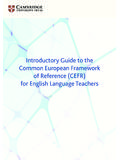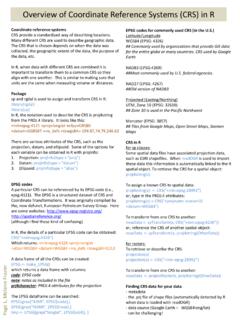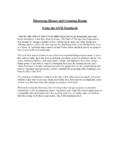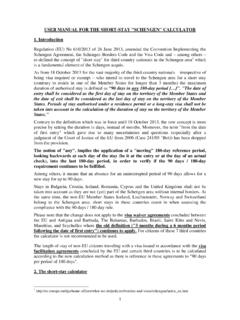Transcription of DEPARTMENT OF THE TREASURY TECHNICAL EXPLANATION …
1 DEPARTMENT OF THE TREASURY TECHNICAL EXPLANATION OF THE. convention BETWEEN THE GOVERNMENT OF THE UNITED STATES OF. AMERICA AND THE GOVERNMENT OF JAPAN FOR THE AVOIDANCE OF DOUBLE. TAXATION AND THE PREVENTION OF FISCAL EVASION WITH RESPECT TO. TAXES ON INCOME AND ON CAPITAL GAINS, SIGNED AT WASHINGTON. ON NOVEMBER 6, 2003. This is a TECHNICAL EXPLANATION of the convention between the Government of the United States of America and the Government of Japan for the Avoidance of Double Taxation and the Prevention of Fiscal Evasion with respect to Taxes on Income, signed at Washington on November 6, 2003 (the convention ), and the Protocol also signed at Washington on November 6, 2003, which forms an integral part thereto (the Protocol ).
2 In connection with the negotiation of the convention , the delegations of the United States and Japan developed and agreed upon an exchange of Diplomatic Notes (the Notes ). The Notes constitute an agreement between the two governments that shall enter into force at the same time as the entry into force of the convention . The Notes are intended to give guidance both to the taxpayers and to the tax authorities of the Contracting States in interpreting the convention . The Notes and Protocol are discussed below in connection with relevant provisions of the convention .
3 References are made to the convention between the Government of the United States of America and the Government of Japan for the Avoidance of Double Taxation and the Prevention of Fiscal Evasion with respect to Taxes on Income, signed at Tokyo on March 8, 1971 (the prior convention ). The convention and Protocol replace the prior convention . Negotiations took into account the TREASURY DEPARTMENT 's current tax treaty policy and the TREASURY DEPARTMENT 's Model Income Tax convention , published on September 20, 1996 (the Model ). Negotiations also took into account the Model Tax convention on Income and on Capital, published by the Organization for Economic Cooperation and Development, as updated in January 2003 (the OECD Model ), and recent tax treaties concluded by both countries.
4 The TECHNICAL EXPLANATION is an official guide to the convention . It reflects the policies behind particular convention provisions, as well as understandings reached with respect to the application and interpretation of the convention . While the convention does not include subject matter headings or titles for the Articles, such headings are included in the TECHNICAL EXPLANATION for ease of use. The headings included generally correspond to headings of analogous articles of the Model where possible, and it is not intended that any legal effect be given to the headings or to the fact of their inclusion in the TECHNICAL EXPLANATION .
5 References in the TECHNICAL EXPLANATION to he or his should be read to mean he or she or his or her.. Article 1 (General Scope). Paragraph 1. Paragraph 1 of Article 1 provides that the convention applies to residents of the United States or Japan, except where the terms of the convention provide otherwise. Under Article 4. (Residence), a person is generally treated as a resident of a Contracting State if that person is, under the laws of that Contracting State, liable to tax therein by reason of his domicile, residence, citizenship, place of head or main office, place or incorporation, or other similar criteria.
6 However, if a person is considered a resident of both Contracting States, Article 4. provides rules for determining a single Contracting State of residence (or no Contracting State of residence). This determination generally governs for purposes of the convention . Certain provisions are applicable to persons who may not be residents of either Contracting State. For example, Article 18 (Government Service) may apply to an employee of a Contracting State who is resident in neither Contracting State. Under Article 26 (Exchange of Information), information may be exchanged with respect to residents of third states.
7 Paragraph 2. Paragraph 2 states the generally accepted relationship both between the convention and the domestic law of the Contracting States and between the convention and other agreements between the Contracting States: that no provision of the convention may restrict any benefit accorded by the tax laws of the Contracting States or by any other bilateral agreement between the Contracting States or any multilateral agreement to which the Contracting States are parties. The relationship between the non-discrimination provisions of the convention and other agreements is addressed not in paragraph 2 but in paragraph 3.
8 Under paragraph 2, for example, if a deduction would be allowed under the Internal Revenue Code (the Code ) in computing the taxable income of a resident of Japan, the deduction also is allowed to that person in computing taxable income under the convention . Paragraph 2 also means that the convention may not increase the tax burden on a resident of a Contracting State beyond the burden determined under domestic law. Thus, a right to tax given by the convention cannot be exercised unless that right also exists under internal law. It follows that, under the principle of paragraph 2, a taxpayer's tax liability need not be determined under the convention if the Code would produce a more favorable result.
9 A. taxpayer may not, however, choose among the provisions of the Code and the convention in an inconsistent manner in order to minimize tax. For example, assume that a resident of Japan has three separate businesses in the United States. One is a profitable permanent establishment and the other two are trades or businesses that would earn taxable income under the Code but that do not meet the permanent establishment threshold tests of the convention . One is profitable and the other incurs a loss. Under the convention , the income of the permanent establishment is taxable in the United States, and both the profit and loss of the other two businesses are ignored.
10 Under the Code, all three would be subject to tax, but the loss would offset the profits of the two profitable ventures. The taxpayer may not invoke the convention to exclude the profit of the 2. profitable trade or business and invoke the Code to claim the loss of the losing trade or business against the profit of the permanent establishment. See Rev. Rul. 84-17, 1984-1 308. If, however, the taxpayer invokes the Code for the taxation of all three ventures, the taxpayer would not be precluded from invoking the convention , for example, with respect to any dividend income the taxpayer may receive from the United States that is not effectively connected with any of the taxpayer's business activities in the United States.



















